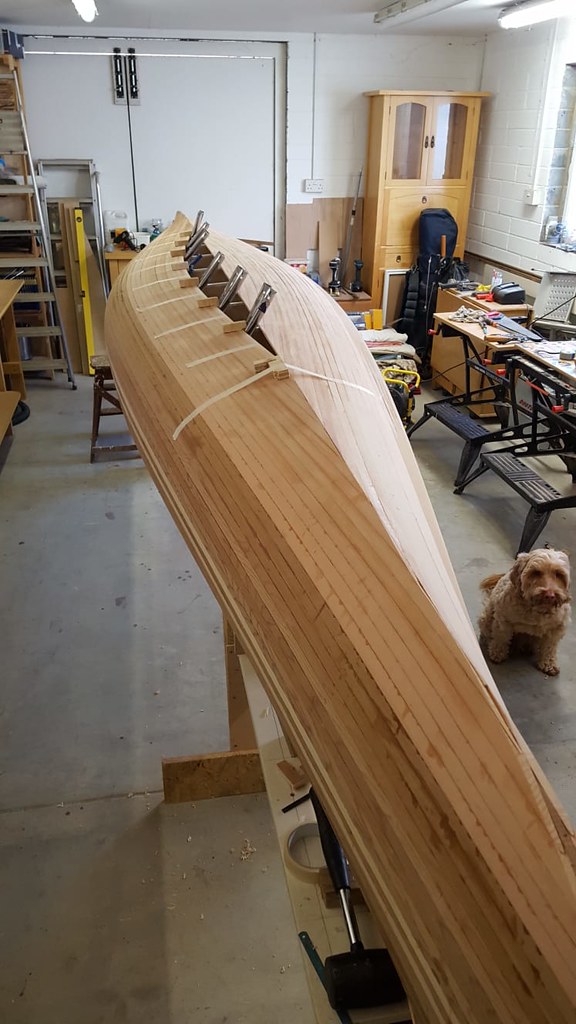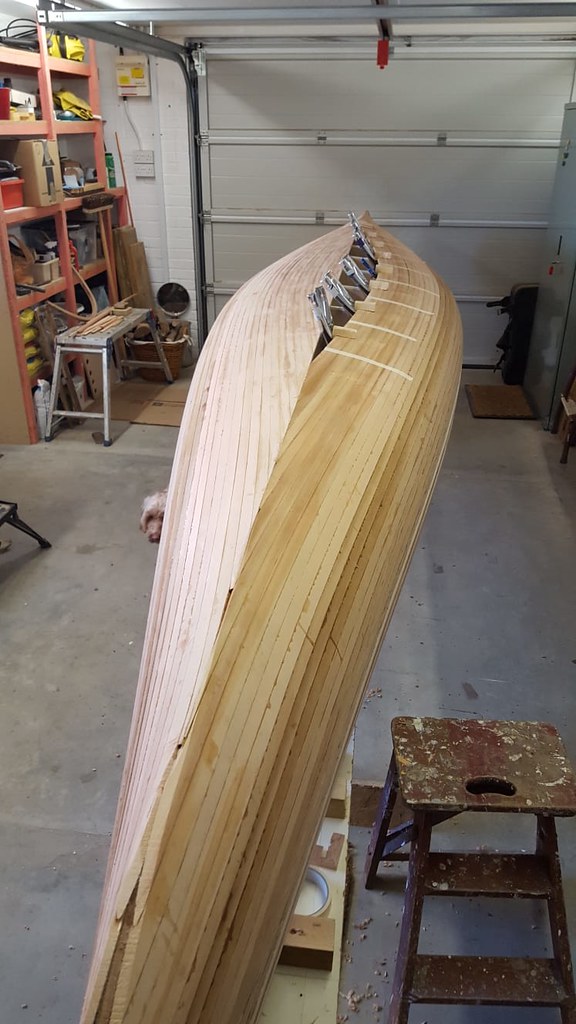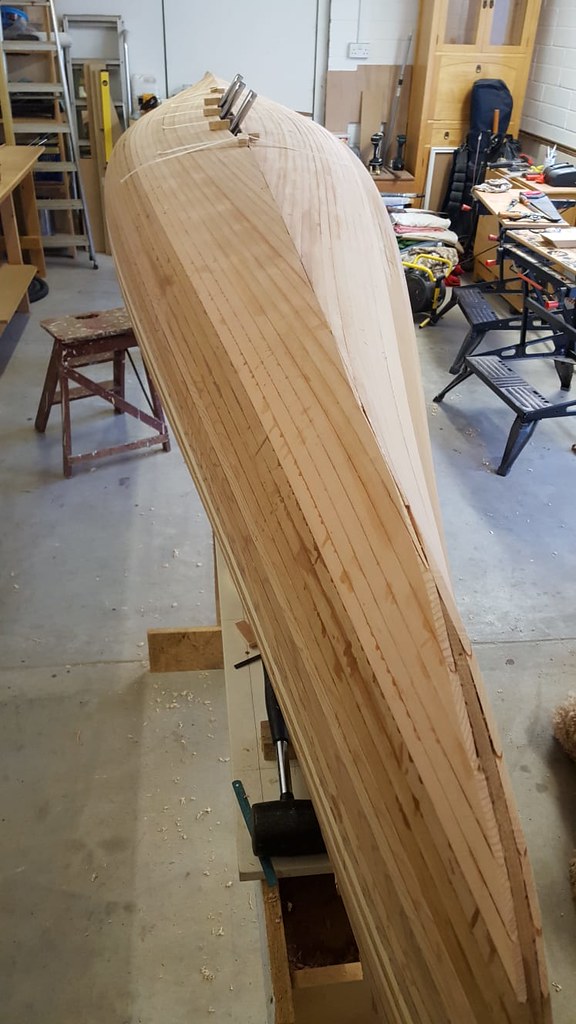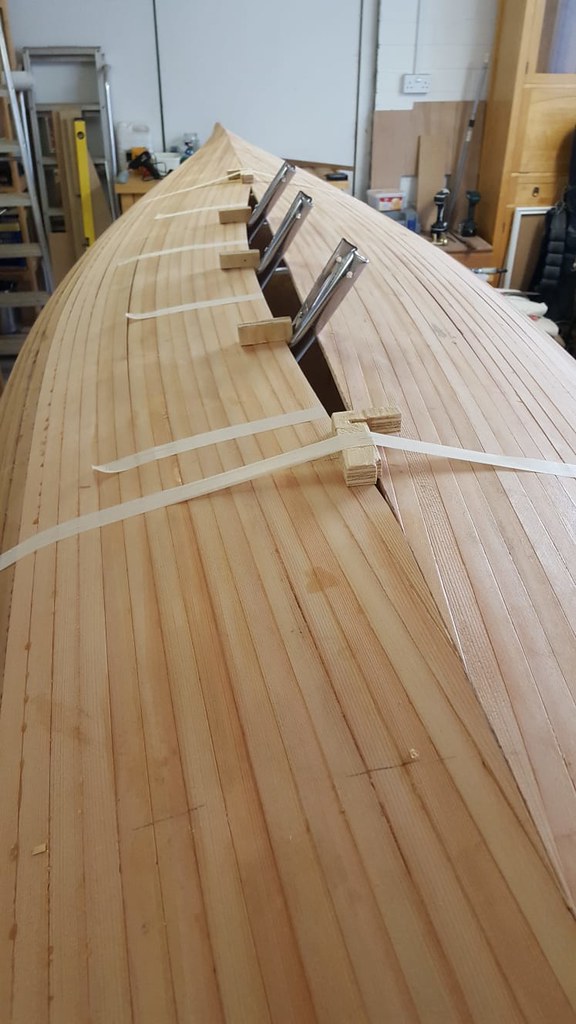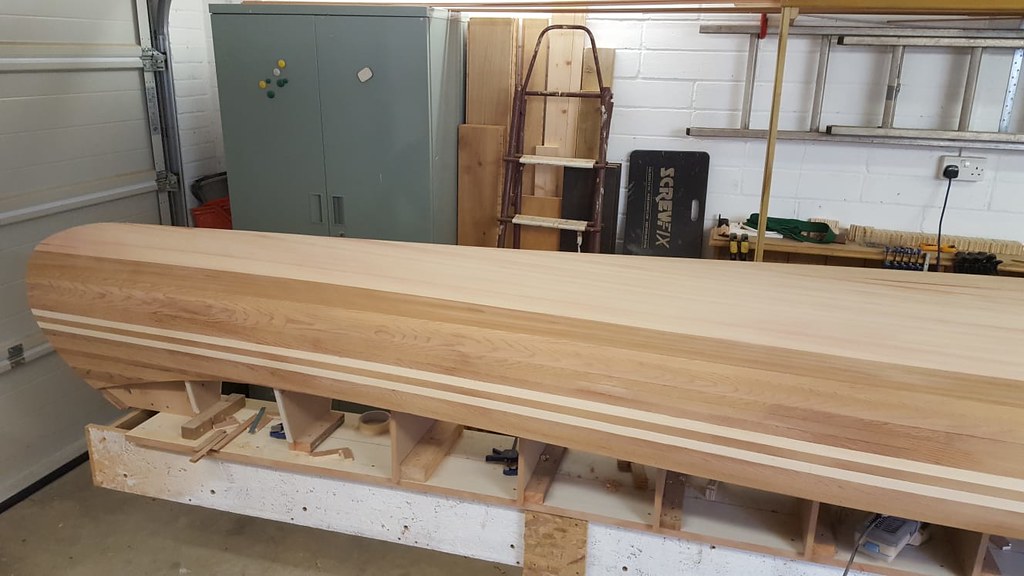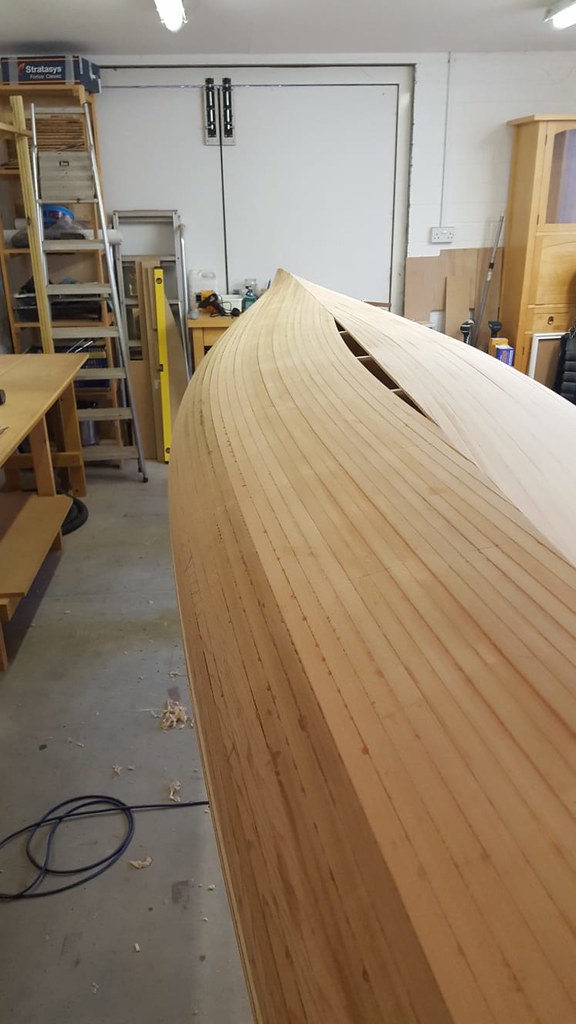Hi everyone,
Thanks very much for all the kind words, my dad seems to have come through with no lasting damage which is good, and now due to good old Boris, he's cracking on without me and has made good progress.
Regarding all the advice about fixing the mishap, I am inclined to agree that removing the strips would have been the best solution, followed by scarfing in some new pieces as a second option, as we do have some extra material but probably not enough to colour match the other side if we were to replace the whole length of the damaged strips.
My dad, however, had different ideas, while left to his own devices he glued the damage back together, getting some of that unsightly darkening of glue that seems to happen occasionally, then continued to add strips above the damage. I was somewhat miffed by this as I thought we had agreed to wait and decide how to fix it when I next came round, but I do think he partly felt guilty and wanted to proceed as quickly as possible to make up for the error.
We will get some coloured wood filler to try and minimise the horrendous state of the dark glue, but I guess the damage is always going to be there now, and it's always going to be visible, I can't see a seamless repair happening now.
It is well below the waterline which is a minor bonus, but it's far from ideal, I will certainly always know it's there!
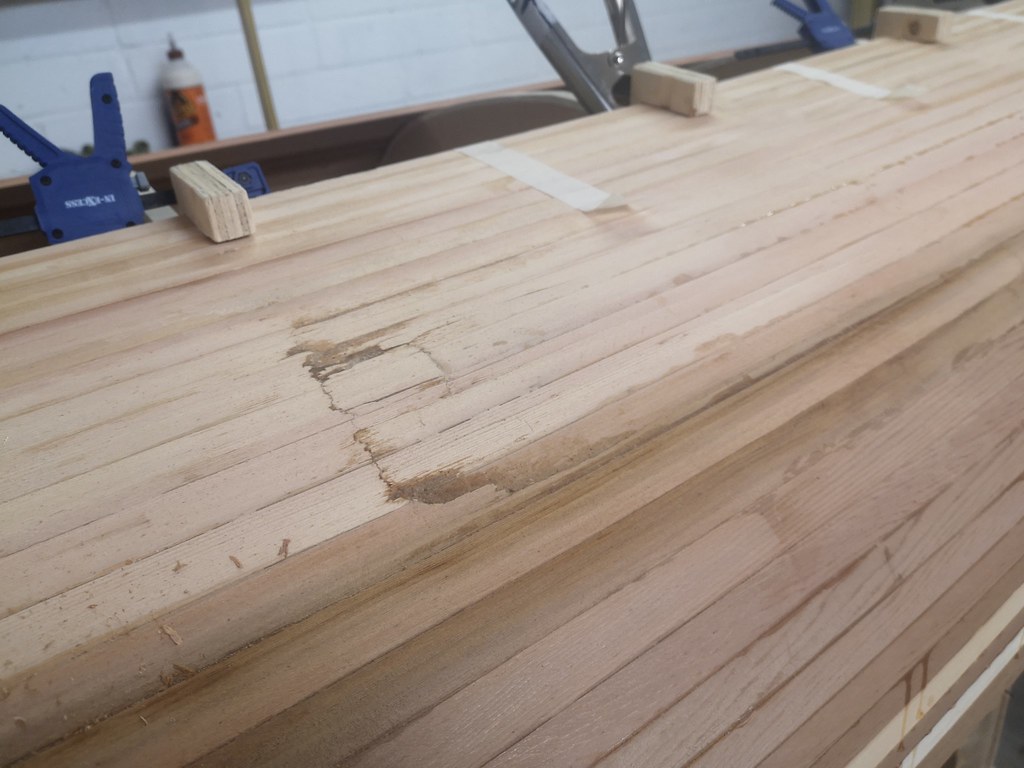
This has moved this canoe firmly into the 'practice canoe' category for me, we were keen to build another after this anyway but now it feels like a necessity, I know we can do so much better, and we will.
Anyway, back to the stripping, my dad made it to the middle!
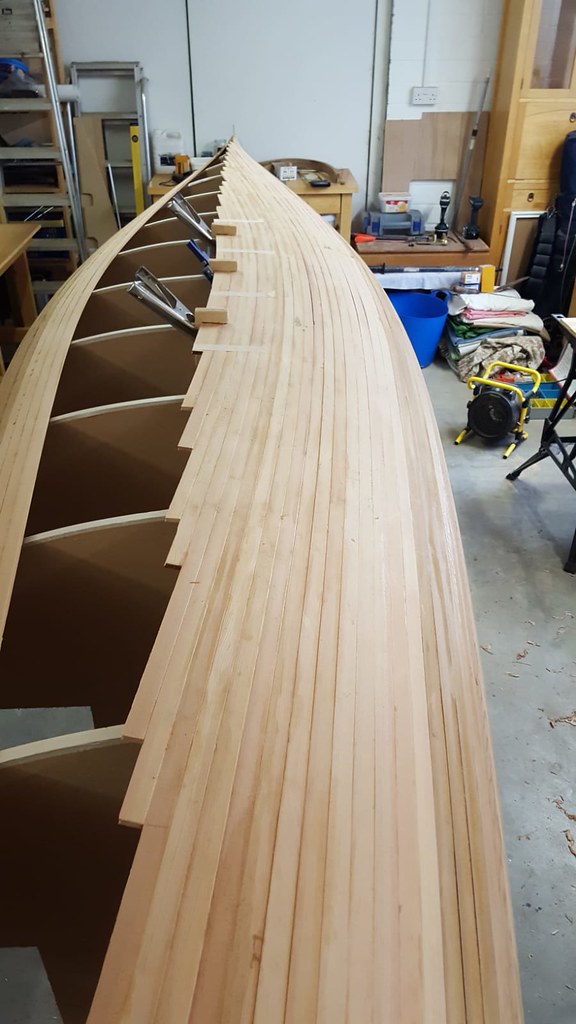
After getting every strip past the centreline, he marked the centreline onto the strips, i'm not sure how exactly but he did a pretty good job:
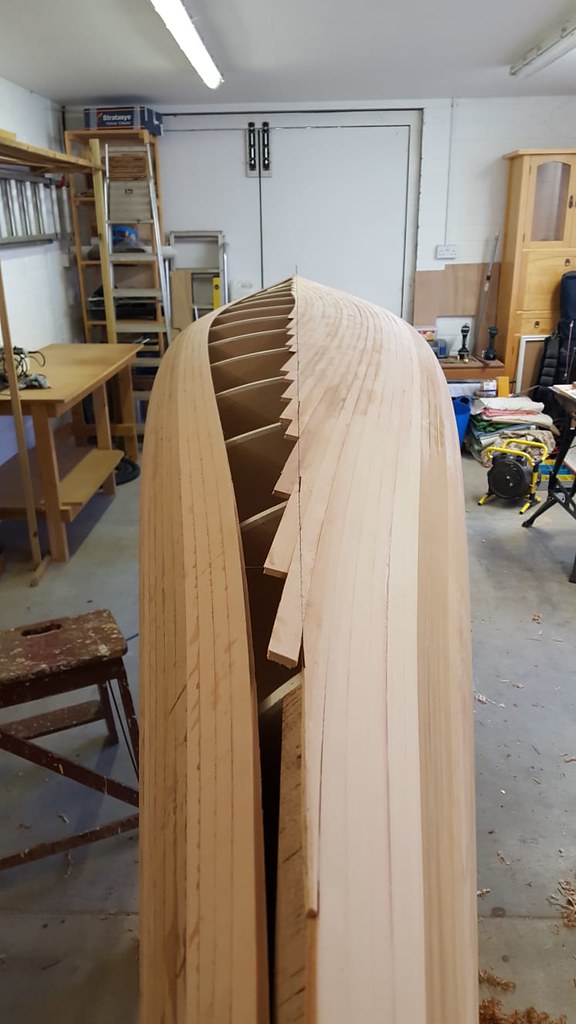
Then using a tenon saw apparently, he trimmed it down to the line the whole way along, creating this rather beautiful, almost optical illusion-like photo:
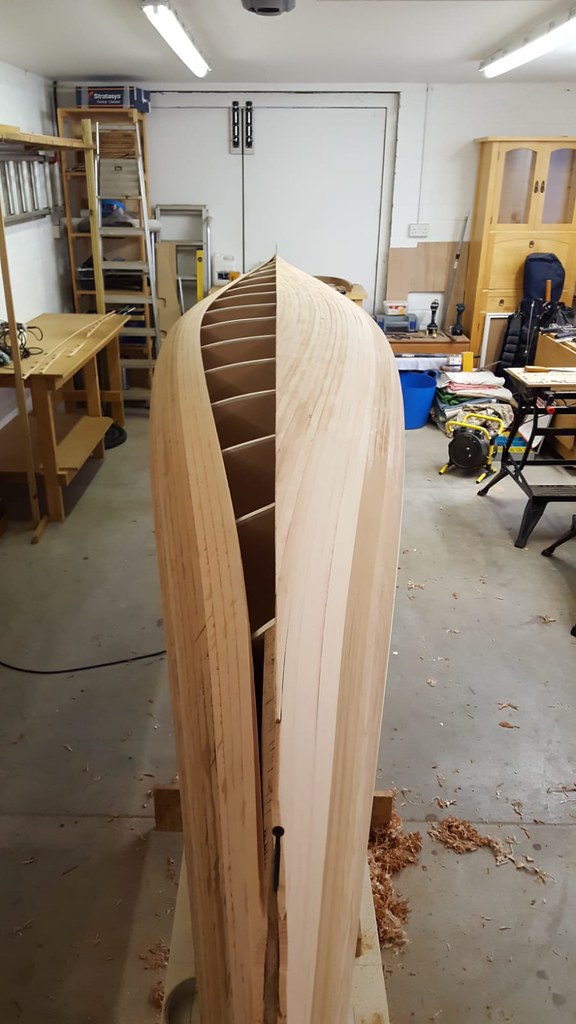
Love that one.
He then started putting strips on the opposite side, this is a little more tricky as you can't stick them on oversize and trim them back after gluing like before, each strip needs to be cut to match the centreline perfectly both ends before gluing up. He tells me this is very difficult on his own!
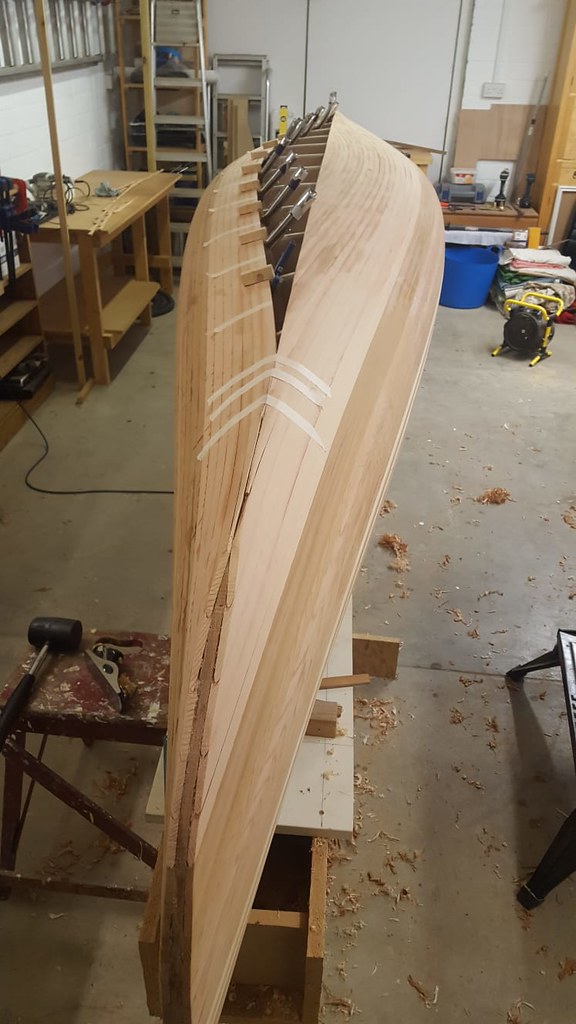
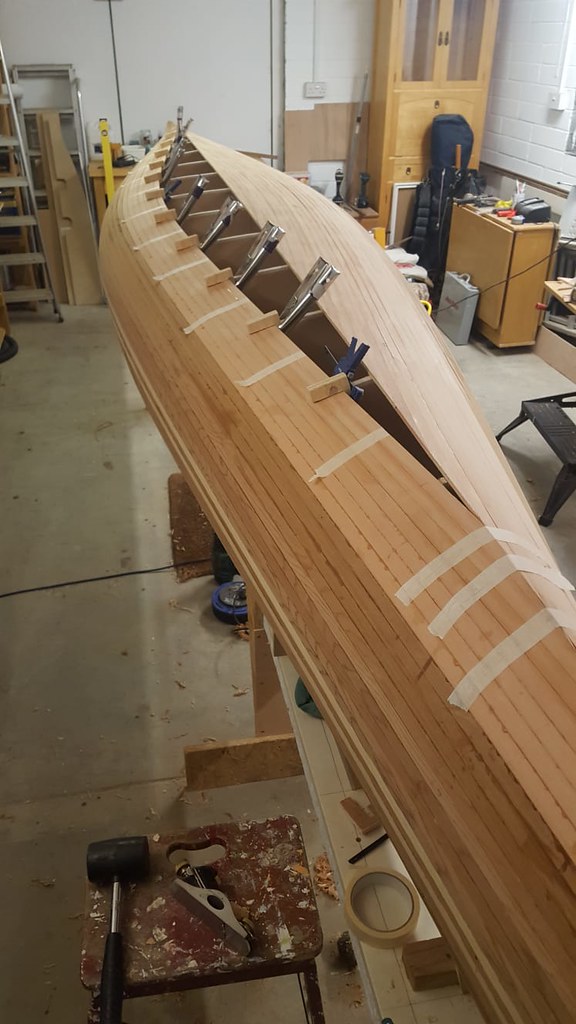
Before lockdown we also started to smooth the finished side of the boat at one end, what a satisfying job that is! The cedar is so easy to work that it planes like a dream, taking the high spots off the strips is very easy and 80 grit sanding to a pretty decent smooth finish is not a long process.
Here is a shot of the smoothed part and a shot showing some smooth and some un-touched:
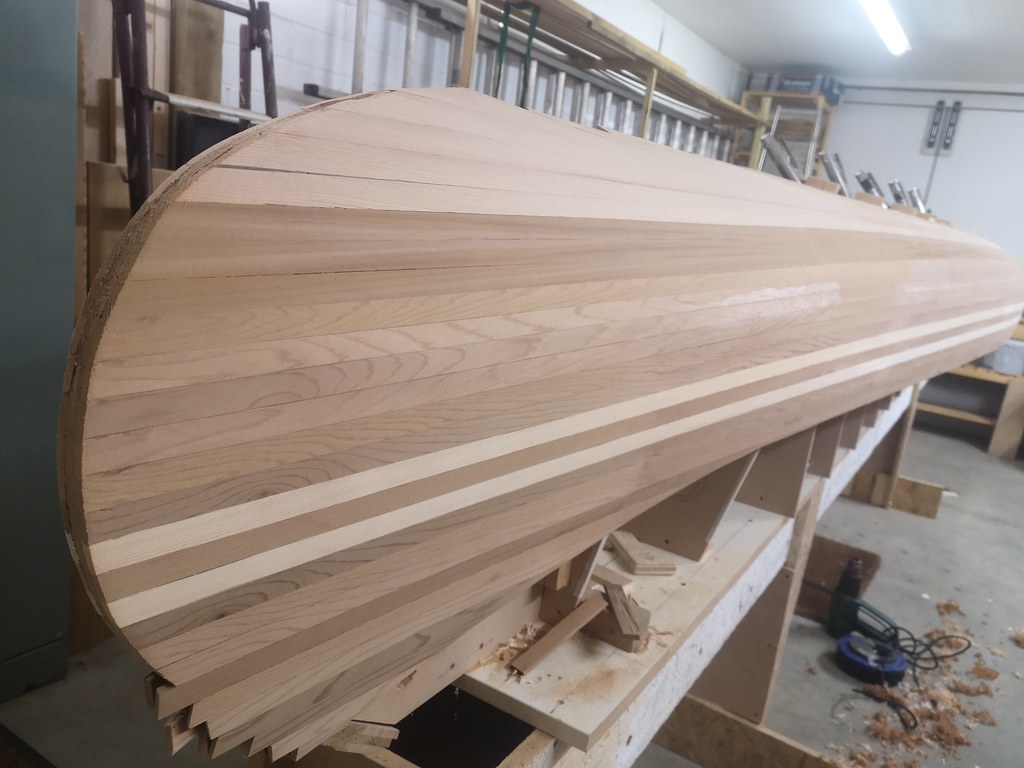
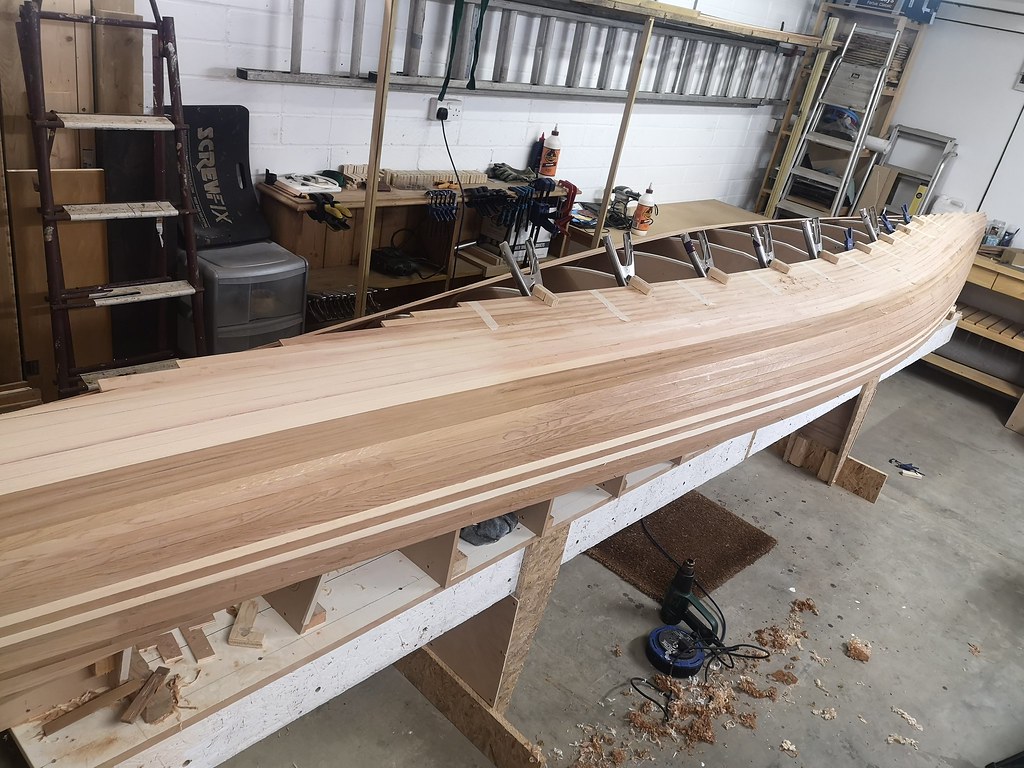
My dad has learned how to send photos via whatsapp now so when there is progress i'll be sure to post it up!














